Welcome to Natural Wonders, where I traipse around outdoors asking random questions about what I see. This past week I visited some fascinating limestone arches and also Toby got bitten in the face by a copperhead, both of which should turn into future issues soon (Toby is okay!). Meanwhile, a chance to catch up on some previous natural questions…
Last week on the drive home I saw this odd version of a rainbow in the sky:
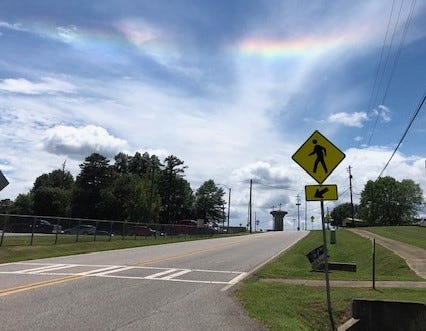
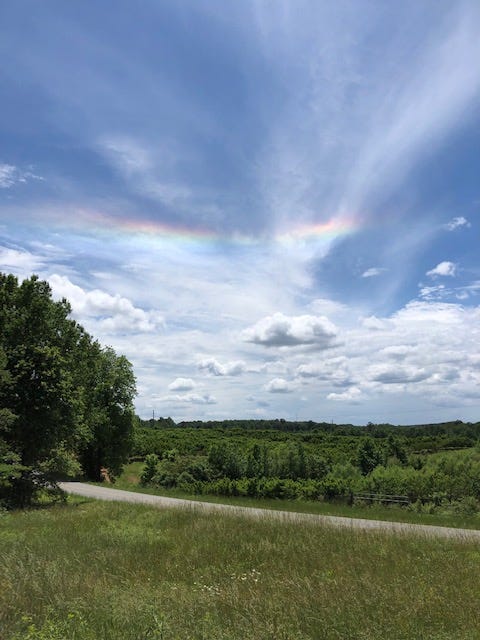
In my issue on What is a sundog? I explored various sky features like sun halos, glories, and Brocken’s specters, so at first I thought I knew what it was – it’s probably a circumzenithal arc like the one my friend Kathy saw:
There was a problem with this theory, however: it was upside down!
A circumzenithal arc has red on the bottom of the band of color, while the weird rainbow I was looking at had red along the top - if you compare the photos, you’ll see the ROY G BIV was reversed. Also, circumzenithal arcs occur when the sun is low on the horizon but it was directly overhead with my weird rainbow.
What was this phenomenon in the sky?
It took some digging, but it turns out this is what’s called a firebow or a circumHORIZONTAL arc, meaning it forms lower in the sky (nearer the horizon) than a circumzenithal arc. It is situated between the horizon and the sun, whereas circumzenithal arcs are always above the sun, usually directly overhead (and therefore easy to miss). The colors form in the same way as the other phenomena I researched – by bouncing off ice crystals in thin cirrus clouds, which you can see in all the photos above.
They’re not terribly rare, but I’d never seen anything like it before.
Does the light of a full moon help plants grow?
Reader @DuncanCocking who writes
left an interesting comment on my issue Is there less oxygen in winter? He says:I've noticed that in the days around a full moon that large leaved vegetables such as squash and cucumber tend to increase their productivity, sometimes as much as 4 or 5 times more cucumbers per day can be harvested around the full moon when compared with the new moon. My theory is that rather than it being some cosmic energy that there is enough moonlight for the plants to photosynthesize 24 hours a day at that time. Any thoughts on this?
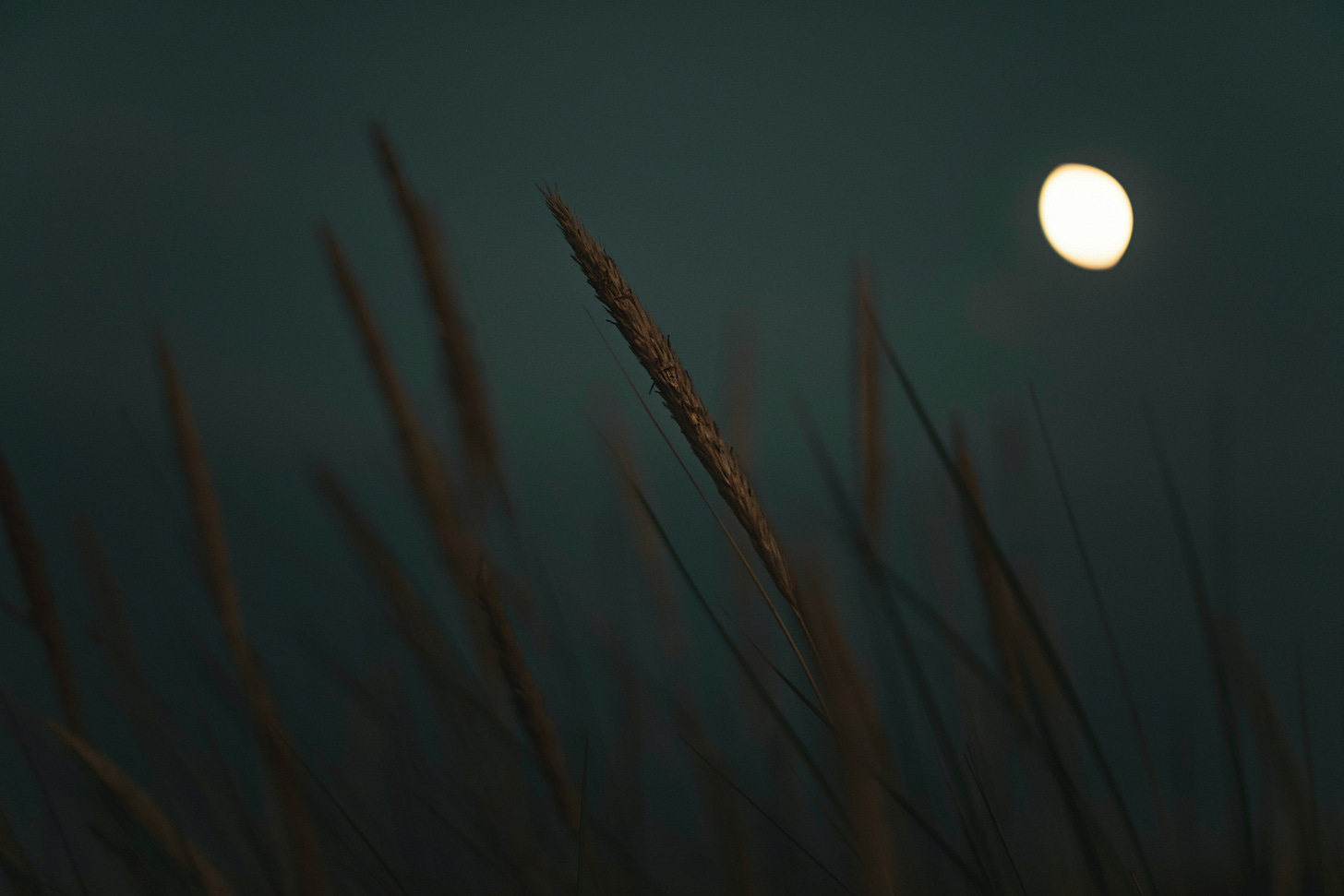
Interesting question! It sounds like it should make sense, but when I did the research I discovered that light from the moon is so dim it’s not possible for plants to use it for photosynthesis. However, it turns out that some phytoplankton in the ocean are able to use moonlight in their photosynthesis processes, and we found out in the above oxygen issue that a huge amount of the oxygen we breathe is actually produced by these phytoplankton patches in the sea.
Just as fascinating was the finding that, while plants can’t photosynthesize moonlight, they do sense it enough to respond to it – several plant varieties will fold up their leaves when exposed to moonlight. Darwin thought it might have to do with plants trying to prevent loss of heat at night, but newer research posits that these plants are closing their leaves in order to maintain a normal circadian rhythm. The strong light of a full moon is perceived as stress by these plants.
How can we save old-growth forests?
I wrote about old-growth forests back in February when I went exploring our North Georgia mountains and found some stands of original, never-logged forests with enormous trees.
I came across an organization called the Old Growth Forest Network and recently heard from them:
The Forest Service & Bureau of Land Management are calling for public comments in response to proposed national rules following President Biden’s Earth Day Executive order on mature & old growth forests. As a first step, the federal government created of a set of old-growth and mature forest definitions inventory. Now these two agencies are asking what policies they should enact to foster ecosystem resilience of old-growth and mature forests and conserve our national forests for climate resilience.
The link to submit a comment through the Old Growth Forest Network page (with a pre-written statement you can add your own comment to is here. Or you can directly comment to the Bureau of Land Management or the Forest Service. Either way, the comment period ends June 20th, and if you feel strongly about protecting our old-growth forests from potential logging, I urge you to send in a comment. In these cases, numbers of responses can be more important than the lyricism of your words.
A few other follow-ups:
After writing about Does this tree have Cancer? I saw this tree on a hike with an enormous burl. I felt like a frog under a toadstool:
Since writing about tree inosculation, I’ve come across several cool examples of tree fusion:
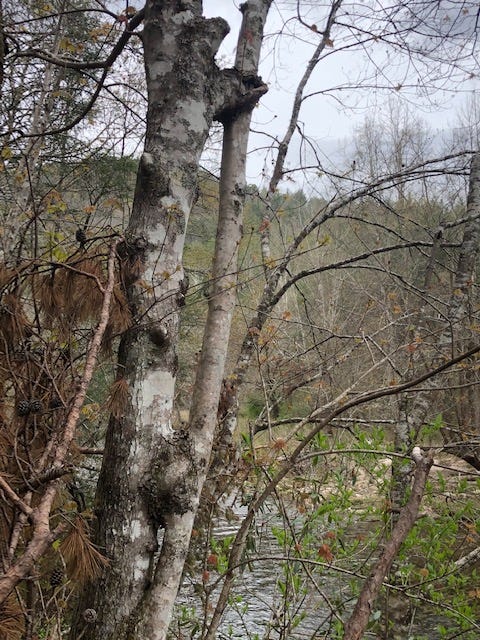
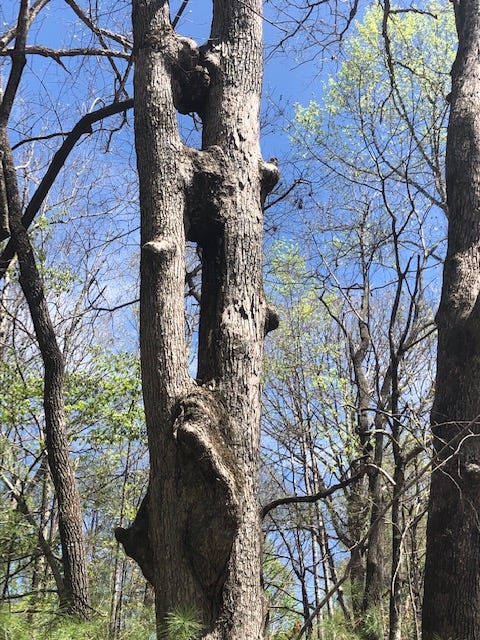
One of my earliest post was about trees on stilts. Since then, I’ve encountered a few examples and had friends share pictures as well:
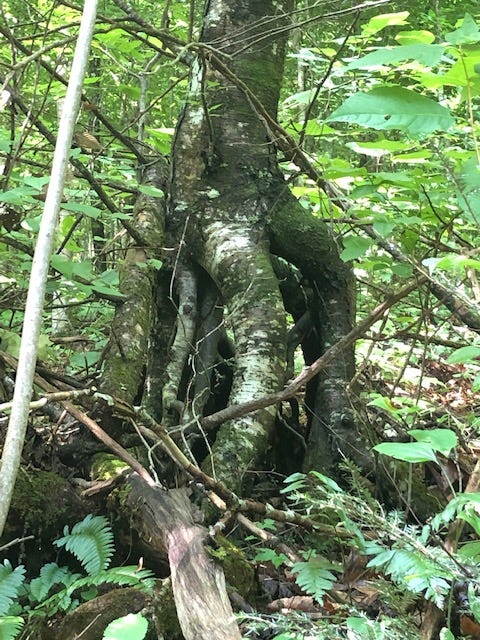

Finally, I’m still not sure whether there are any remaining Marker Trees still surviving, but I keep coming across a few here and there that seem fairly convincing:
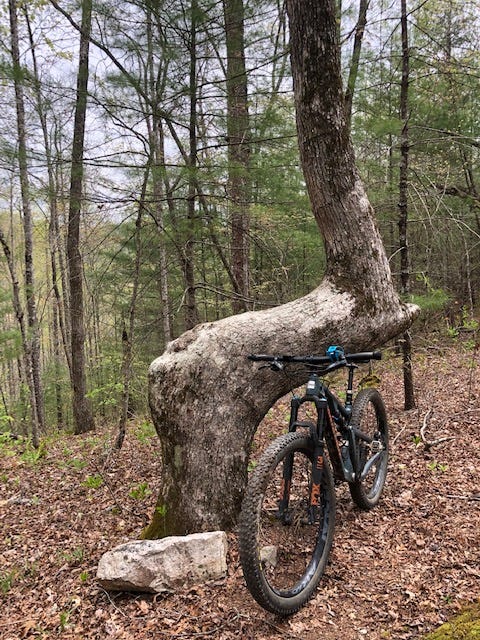
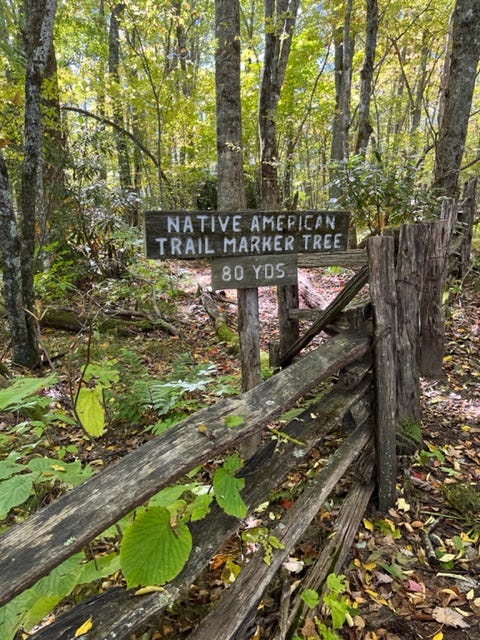
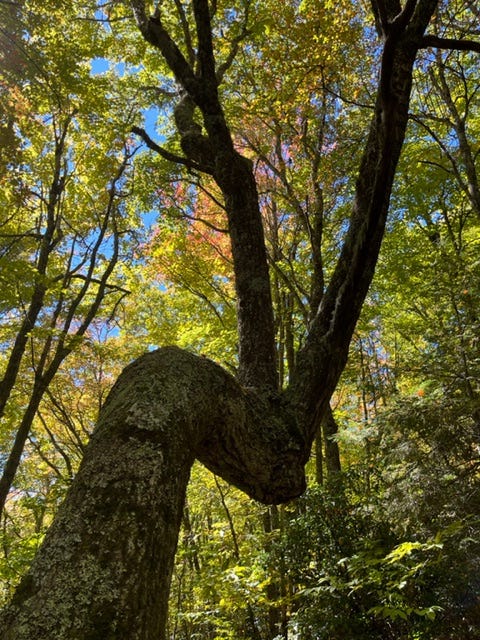
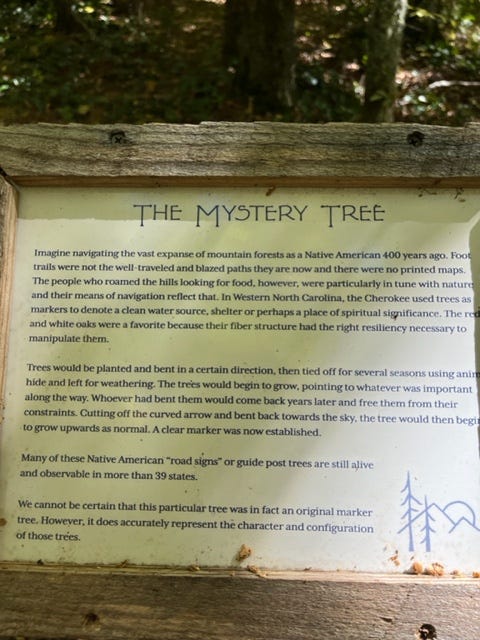
What about you? Have you encountered anything from previous Natural Wonder issues in your wanderings outdoors?
Weird Nature
If you enjoyed this issue, please click the “like” button below - it helps raise the profile of the newsletter and makes it easier for others to find it. And please share it with your friends!





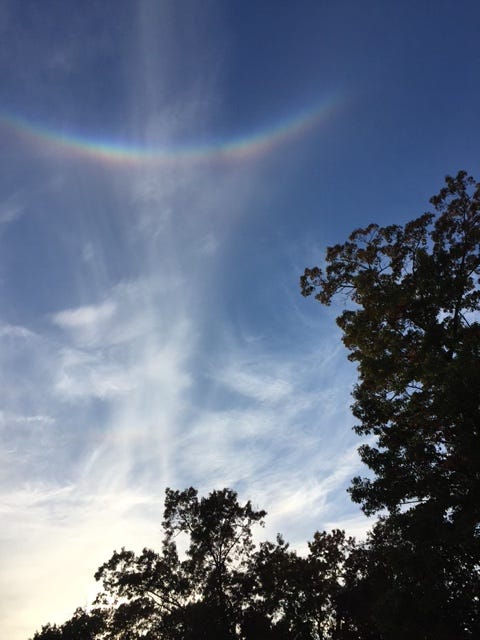
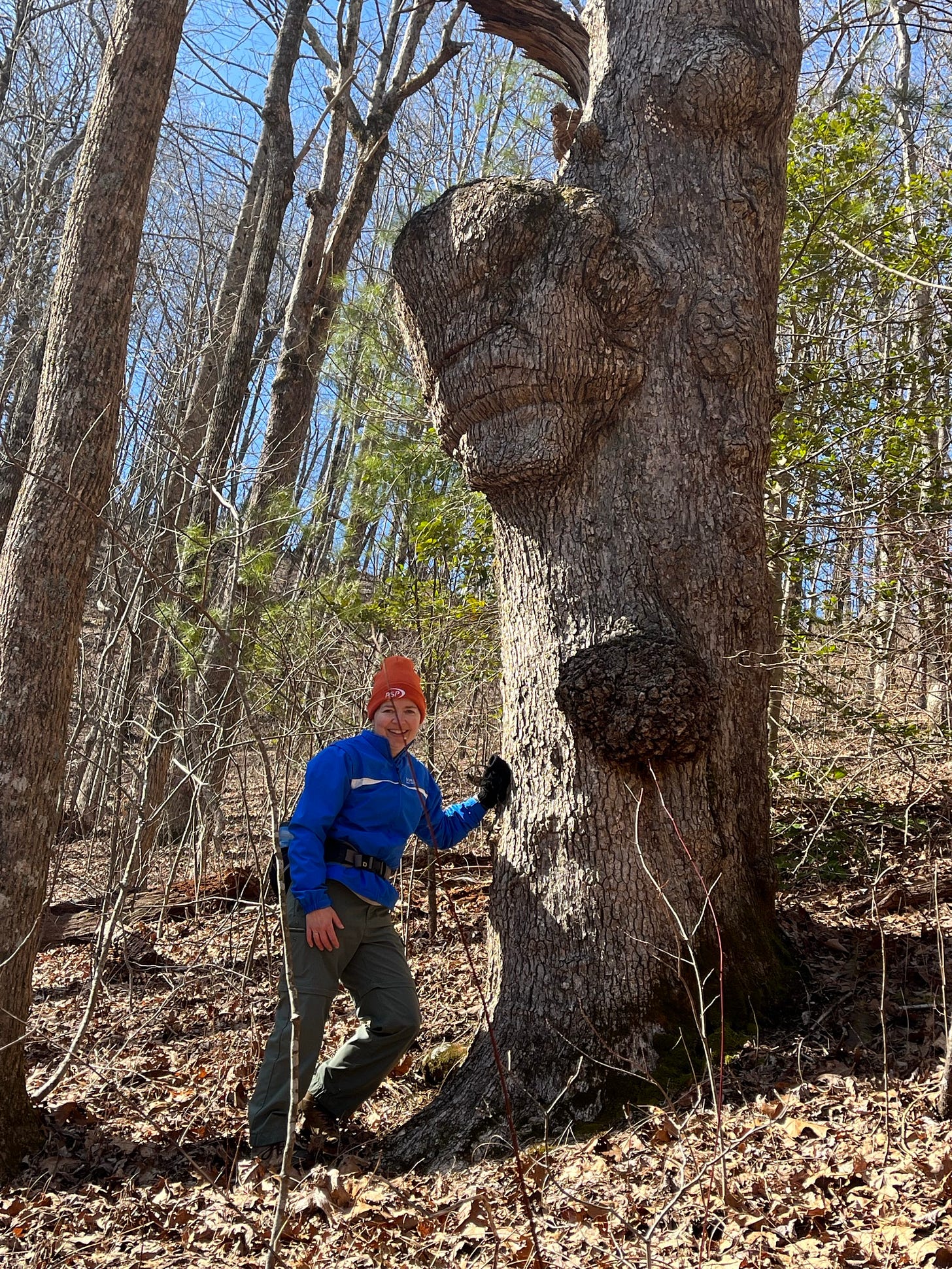
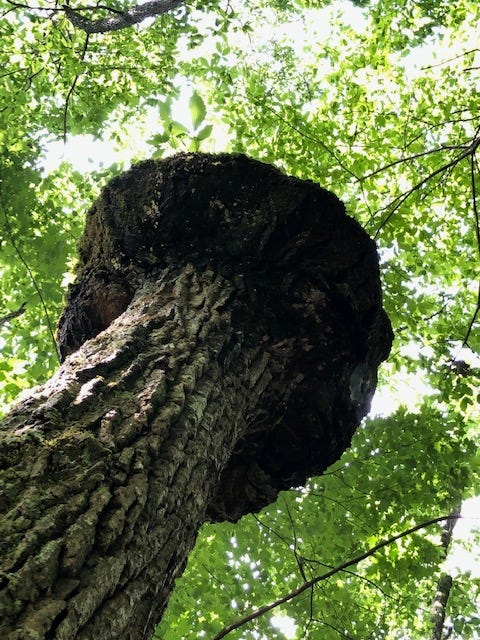

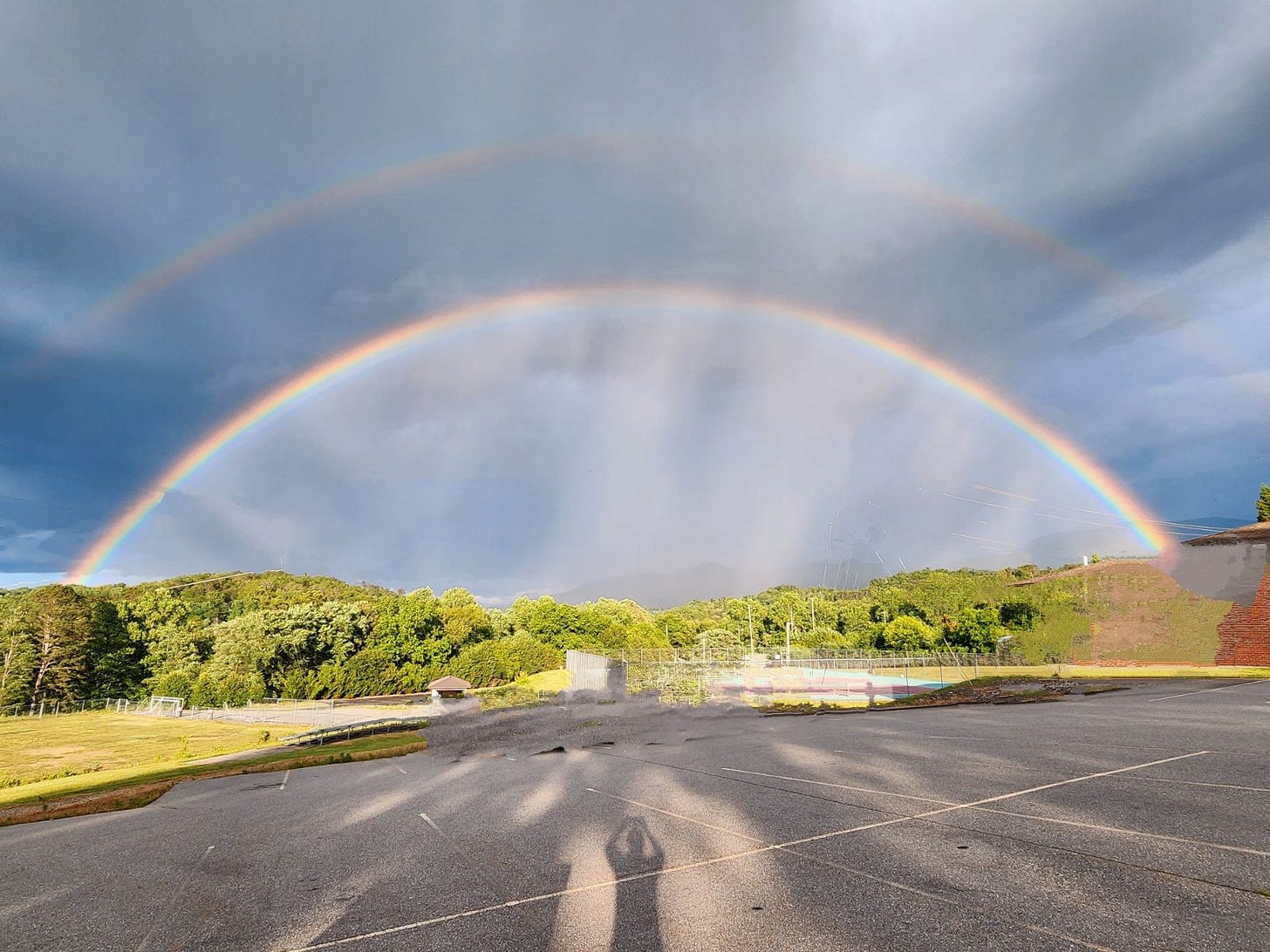
Thank you for the link to sign to support conserving old growth forests. I didn't know about this movement and coalition before reading your article I signed and added a comment. You make such a difference.
Also I loved learning about the rainbow types, and those two cool names I hate to type here without checking them again, lol.
Wow... Thanks for following up so quickly Heather. Now I'm really confused. I weigh most of my produce and record extensive observations of our edible garden ecosystem. It is a definite increase in productivity around the full moon, but only in very large leaved plants. I have a background in science and understand the difference between correlation and causation. So if it's not night-time photosynthesis then I wonder what the influence could be? I might head down that rabbit hole further and do some more research at some point soon. Will let you know if I find out anything of significance.